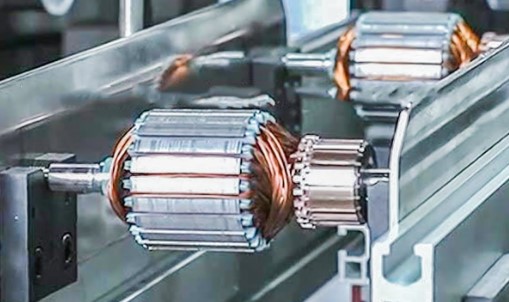A Comprehensive Guide On Selecting the Perfect BLDC Motor Production Line

If you want to learn about Brushless DC (BLDC) then keep reading. For manufacturers, scaling BLDC motor production needs careful selection of the right production line. This article will guide you through the key factors. The factors you need to consider when choosing a BLDC motor production line. They ensure an efficient and cost-effective operation.
Understanding Your BLDC Motors
The first step is to clearly define the BLDC motors you plan to produce. Here are some crucial aspects to consider:
- Motor Specifications: This includes factors like voltage, power output, number of pole pairs (affecting control algorithms), and whether the motor uses an encoder (sensor-based) or is sensorless. For example, Automotive Engine BLDC Motor Production Line power is 55KW (max).
- Production Volume: Knowing your anticipated production volume per day, month, or year helps determine the line’s capacity requirements. High-volume production necessitates a faster and more automated line.
- Budget: Production line costs can vary significantly. Be upfront about your budget to ensure you’re exploring realistic options.
Matching the Line to Your Needs
With a clear understanding of your BLDC motors and production goals, delve into the production line itself. Here are key areas to evaluate:
- Level of Automation: You should evaluate the level of automation such as production lines ranging from semi-automated to fully automated. Consider the trade-off between upfront cost, labor savings and speed of production.
- Individual Stations: Stator lamination cutting, slot stacking, winding, magnet insertion, shaft assembly, testing and balancing are some stations in a typical line for producing BLDC motors. Identify which of these stations are critical to your process and make sure that they are offered by the line.
- Scalability: If you anticipate future growth, choose a line that can be easily expanded with additional modules to accommodate increased production volume.
- Integration with Existing Infrastructure: Consider how the line will integrate with your existing workspace and equipment. Ensure compatibility with power supply, compressed air, and material handling systems.
Evaluating the Production Line Supplier
Beyond the technical specifications of the line, assess the supplier’s capabilities and reputation:
- Experience: Choose a supplier with a proven track record in BLDC motor production lines. Look for case studies demonstrating successful implementations for companies with similar requirements.
- After-Sales Service: A reliable after-sales service is highly essential for a business. You need to ensure the supplier offers quick assistance in case of any issue.
- Quality Certifications: You need to choose suppliers with certification such as ISO 9001. It shows their commitment to quality management systems.
Additional Considerations
Here is detail about some things to consider:
Safety Features: Ensure all necessary safety barriers and precautions are incorporated into the machine line to guard against potential hazards.
Lead Time and Installation: Include delivery time, installation period, and start-up time into production line design
Warranty: Understand what kind of warranty they have offered you on this equipment.
Conclusion
For your industry, selecting the most suitable bldc motor production line is a crucial decision. This is because it can have a profound impact on your productivity rate. As well as it affects the company’s profitability. You need to carefully consider your motor specifications, production goals, and the capabilities of the supplier, for making an informed choice that sets your business up for success. Importantly also, it will help in reducing costs through improving operation efficiencies within product life cycles hence reducing lead-time in manufacturing by using value analysis methodologies to identify non-value adding activities.






